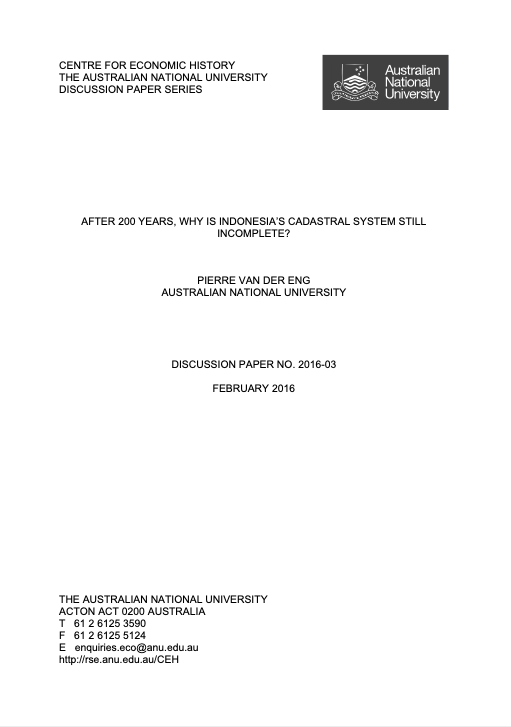Resource information
This paper discusses Indonesia’s experience with establishing a uniform cadastral system in rural areas since the idea was first mooted in the early 19th century. Until 1961, a formal cadastre that identified, measured, registered and certified land titles existed only in urban areas. A cadastre for rural land did not start until after the 1960 Agrarian Law. Until then, the village-based land tax registers acted as a substitute cadastral register in areas subject to land tax. In the 19th century, this system was imperfect and calls to resolve issues of inequity in tax assessment led to improvements, especially since 1907. A proper rural cadastre was not introduced during the colonial era, because of the high cost involved, and because its certification of individual land rights would have clashed with customary regulations, including notions of communal land tenure. The introduction of a rural cadastre after 1960 was piecemeal, and the use of property tax registration as a substitute cadastre has continued. By 1992 cadastre registrations covered just 20% of land plots, mostly in urban areas. A World Bank-sponsored project helped to increased coverage since 1994 to 32% in 2013. Greater coverage was delayed by the rapid increase in newly opened up agricultural areas, the cost of land title certificates, the difficulties of reconciling individual land ownership with customary regulations, and also the continued use of property tax registers as a substitute cadastre.


